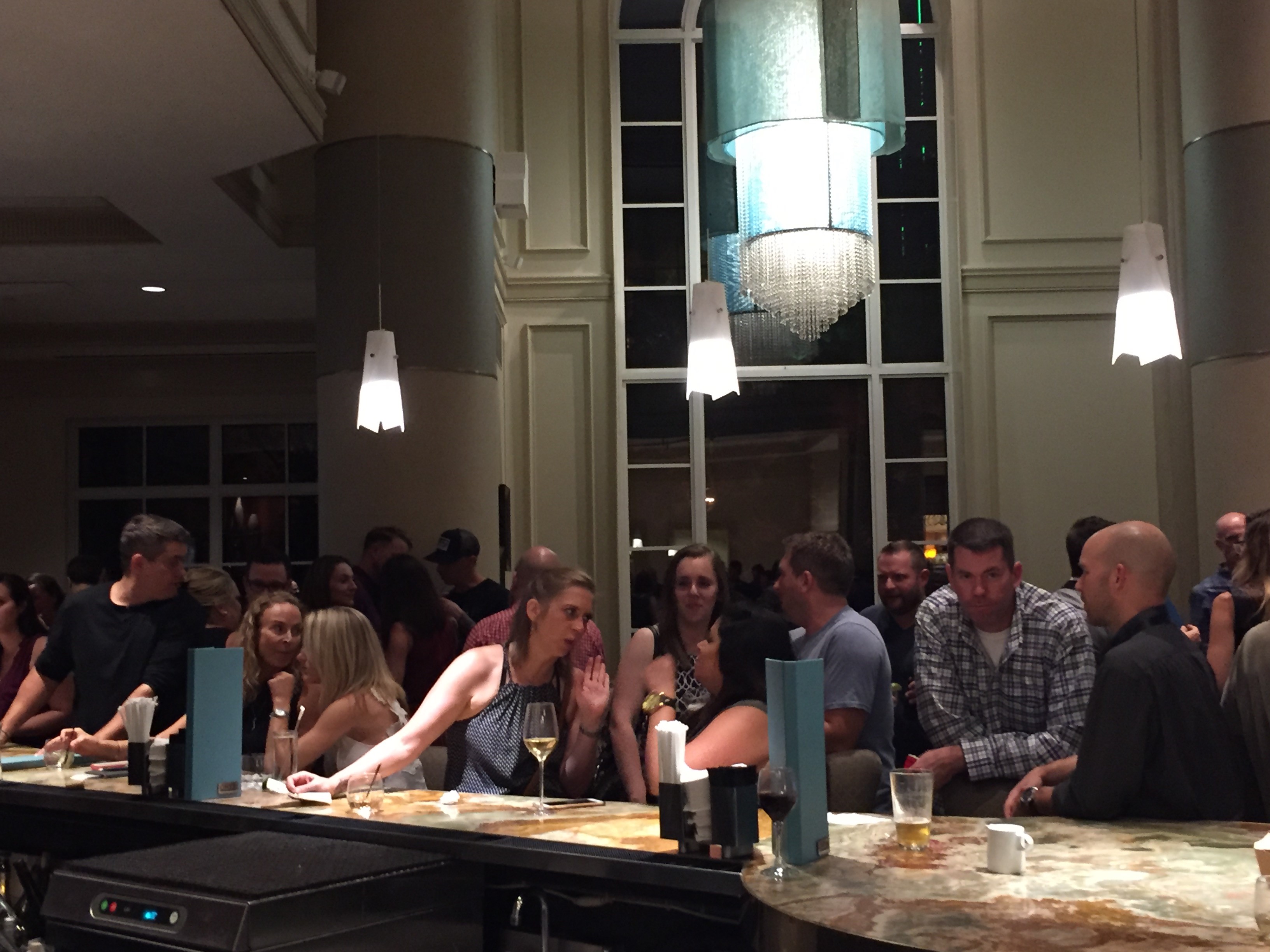
In a year like no other, the disappointments, the surprises, and the revelations continue. In yesterday’s blog post, we talked about how virtual meeting platforms like Zoom are revolutionizing how we interact with and learn from each other.
Since March, not a single scheduled radio-ish convention or conferences has taken place. They’ve all been cancelled, postponed, or re-imagined as virtual events. And given the state of the pandemic as we head into an uncertain fall, the current atmosphere may well continue into 2021.
That puts convention planners, media groups, and state broadcasters associations in a tight spot. Can virtual conferences work, how are they different from the real thing, and what do both organizers and attendees need to know?
The scene at the top of this post is the bar at the Grand Hyatt in Buckhead – ground zero for the Morning Show Boot Camp that took place in Atlanta in 2016. That evening ritual is part of the magic of many of these get-togethers – a chance to compare notes, hang out, and spend time with industry friends and colleagues. That’s a challenge for virtual events, but there are workarounds.
Fortunately, we have three canaries in the virtual conference coalmine who are now veterans. In fact, Don Anthony, Abby Goldstein, and Michelle Younkman have each pulled off one of these events in the past 30 days, with precious little time to plan and no template from which to work.
Their respective organizations are all about radio – but attract very different groups with unique need and priorities. Respectively, Morning Show Boot Camp is comprised of mostly commercial radio air talent, PRPD is primarily a group of public radio programmers and content creators, while Momentum is put on by the Christian Music Broadcasters.
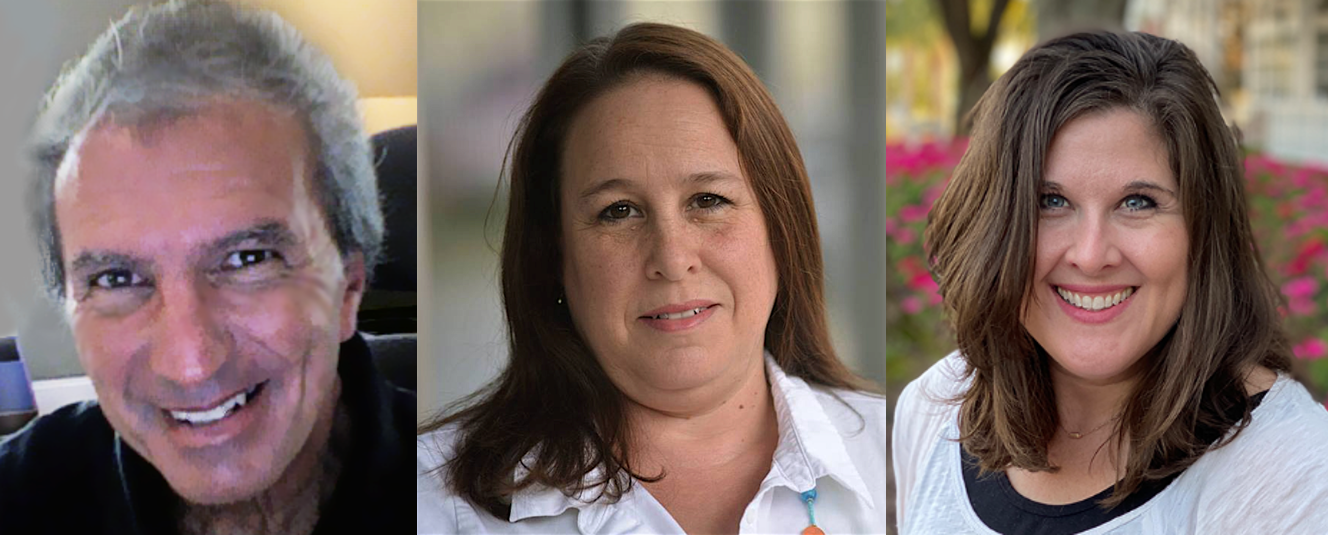
All three executives have planned conventions before – but nothing like this. In Michelle’s case, it’s been a tough couple of years. She’s had on-site Momentum conferences in Orlando cancelled due to hurricanes.
As a result of their recent virtual events, the trio is quite a bit wiser today. Paul and I were fortunate enough to present at all three of their conferences, and while we’ve probably averaged three Zoom meetings a day, presenting in this format as well as answering questions is a whole different deal.
I had a chance to compare notes with Don, Abby, and Michelle. Here are some key takeaways:
It’s still about the content, and now it’s the sooner the better – Don was quick to point out that great speakers, topics, and sessions still drive the quality of a conference, in-person or virtual. He noted how “viewers were quick to applaud” (via our comments window).
Abby told me there was heavy demand to post recordings of sessions quickly, a smart way to expand audience attendance for these sessions. While only 60 people may attend when a panel is live, it doesn’t take long for 300 to view them, especially when they’re posted that same day.
Michelle reiterated that Momentum also offers an “on-demand option, so the education continues.”
Don’s Morning Show Boot Camp 32 panels and keynotes will be available later this week to capture the spirit of his event, and allow others to take in some of the content.
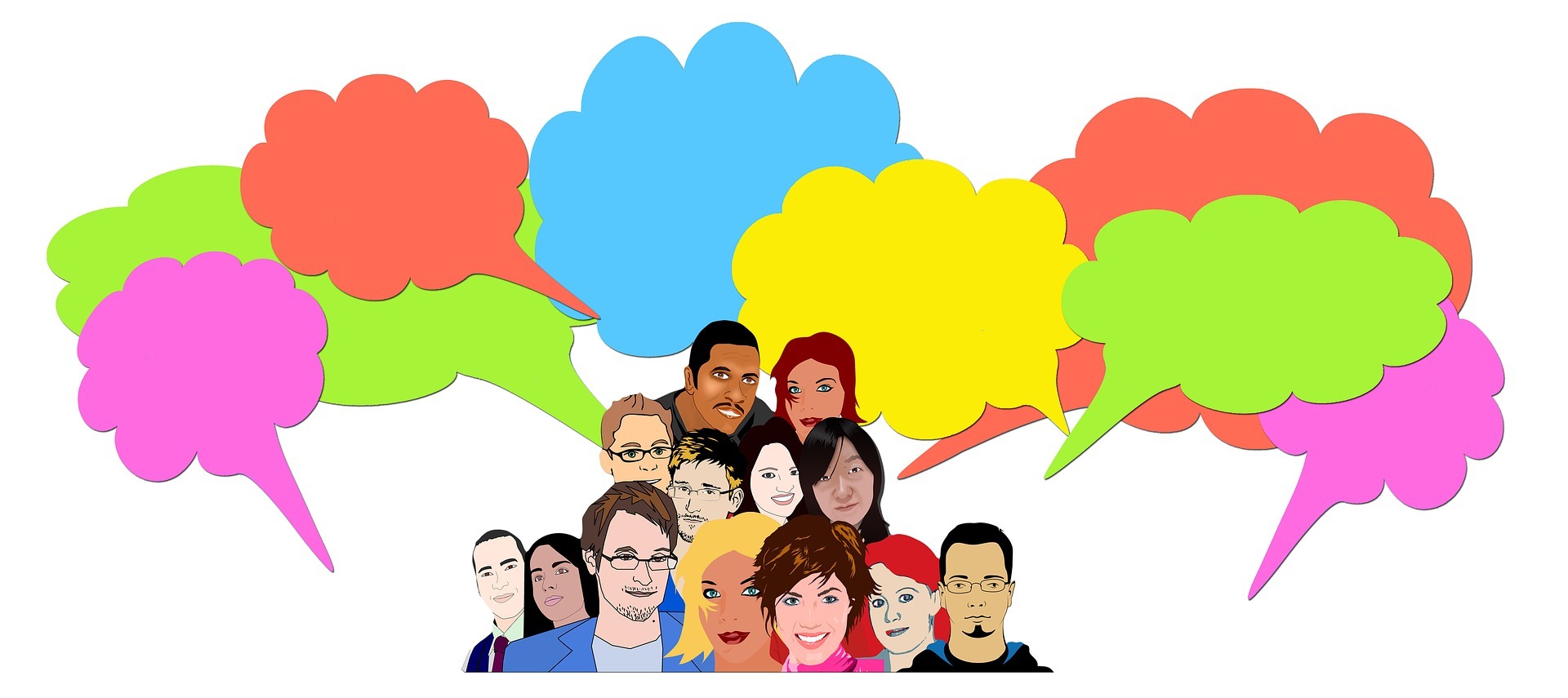 Virtual conferences are challenging – Michelle underscored that “we were challenged to think creatively in a virtual, live setting, while maintaining the standard of excellence with our education opportunities.” And both Michelle and Don agreed that time was especially tight leading up to their events which were scheduled concurrently last week. Don recalls, “This year, I had to squeeze everything into slightly more than two months, and it was brutal.”
Virtual conferences are challenging – Michelle underscored that “we were challenged to think creatively in a virtual, live setting, while maintaining the standard of excellence with our education opportunities.” And both Michelle and Don agreed that time was especially tight leading up to their events which were scheduled concurrently last week. Don recalls, “This year, I had to squeeze everything into slightly more than two months, and it was brutal.”
For the first time ever, PRPD partnered up with the Public Media Journalists Association, which made it easier to “share the workload” and have “a little bit bigger bullhorn.” The collaboration also suggests that other organizations might consider alliances to spread out responsibilities, the financial risk, and of course, the appeal of the event itself.
On-air performers may make the best panelists – As time goes on, many of those making presentations or appearing on panels will have worked through the ins and outs of the technology.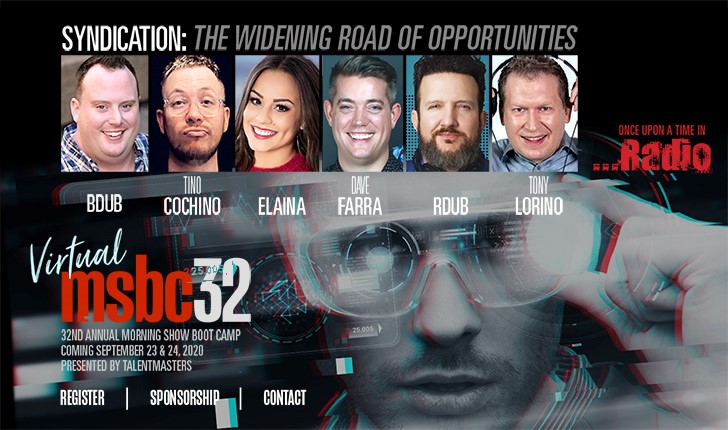
Don’s Morning Show Boot Camp participants tend to be radio personalities and producers. As he told me, “They’ve got this. I can’t imagine anyone being better equipped for a virtual event than radio talent. Many on-air hosts, especially morning shows, have spent the last several months managing their shows from home, connecting with their cast members via multiple screens. They’re used to talking to an audience they can’t see.”
The virtual format took the pressure off some attendees (and perhaps the presenters) – Don acknowledged that at in-person events, attendees are often reticent to step up and ask questions: “(This year), I watched moderators field questions from a number of “anonymous” viewers. Each time I heard that, it brought a smile to my face.”
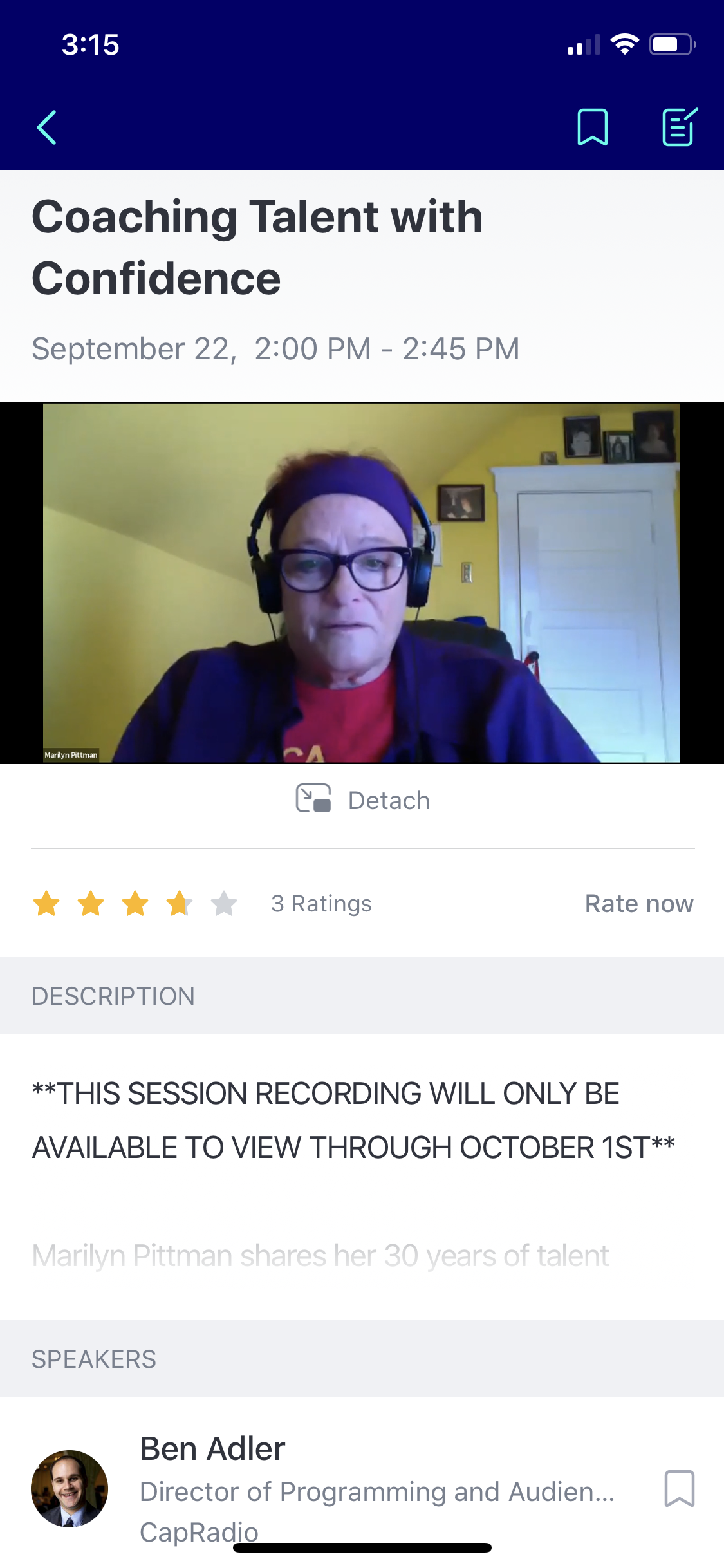 Abby observed the very same thing: “People who might not be comfortable asking questions during a large session in a hotel ballroom with 400 of their colleagues present seem to have no problem asking questions in a chat window.”
Abby observed the very same thing: “People who might not be comfortable asking questions during a large session in a hotel ballroom with 400 of their colleagues present seem to have no problem asking questions in a chat window.”
Virtual conferences also make it easier – and perhaps more affordable – to attract big name presenters as well. Podcast Movement recently announced Mark Cuban for their virtual event this year. Not having to jump on a plane and spend 2-3 days due to conference and travel commitments is a much better value proposition for famous names, making their appearances far more negotiable and frankly easier.
Most of us accustomed to presenting have done as many webinars as live, on-stage appearances. It’s simply a matter of adjusting your point of view with your audience.
One of the best sessions at PRPD this year was a talk from talent couch and comedian Marilyn Pittman (pictured left), who lives in San Francisco. But the virtual quality of last week’s event made her appearance much easier to navigate and negotiate than if the conference had been scheduled in New Orleans, its original location.
Engagement was higher – Michelle noted, “The live chat was an instant favorite. Several speakers joined us after their presentations for Q&A.” 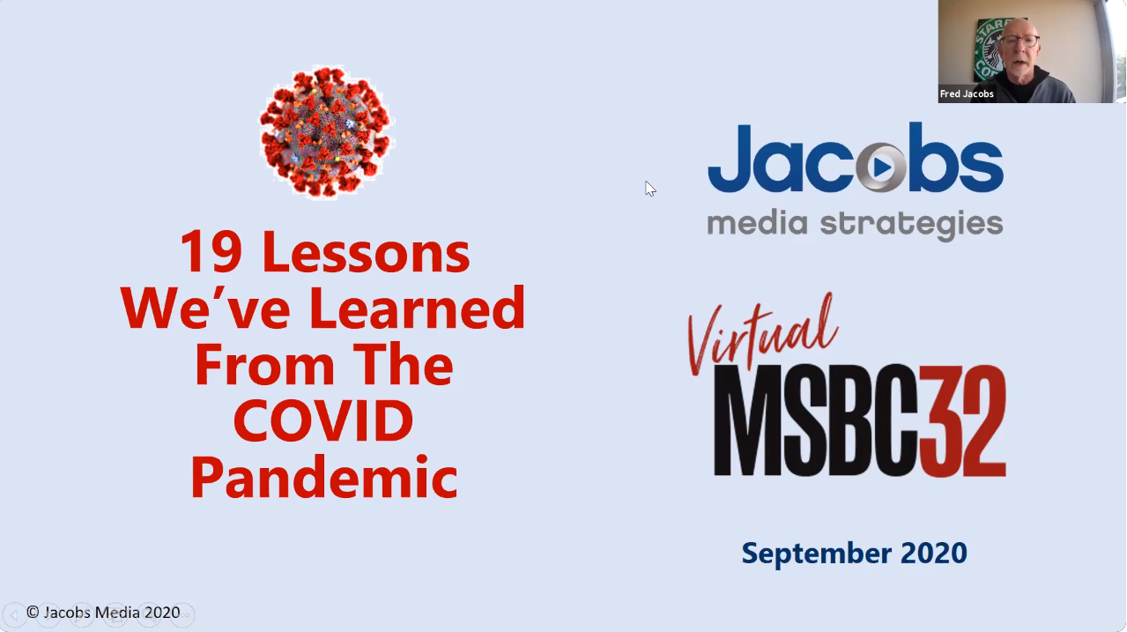 Similarly, Boot Camp included questions, and I can tell you they were fun to scroll through and answer.
Similarly, Boot Camp included questions, and I can tell you they were fun to scroll through and answer.
Abby also observed “several interesting side conversations going on in chats during many of our sessions. That was a surprise to me.”
And then there were those unexpected moments. Michelle related that some Christian music artists “dropped by” to host or provide performances. And her staff also engaged radio by doing “shout-outs to stations who registered three or more of their staff” as well as “check-ins with those who were back in the office.”
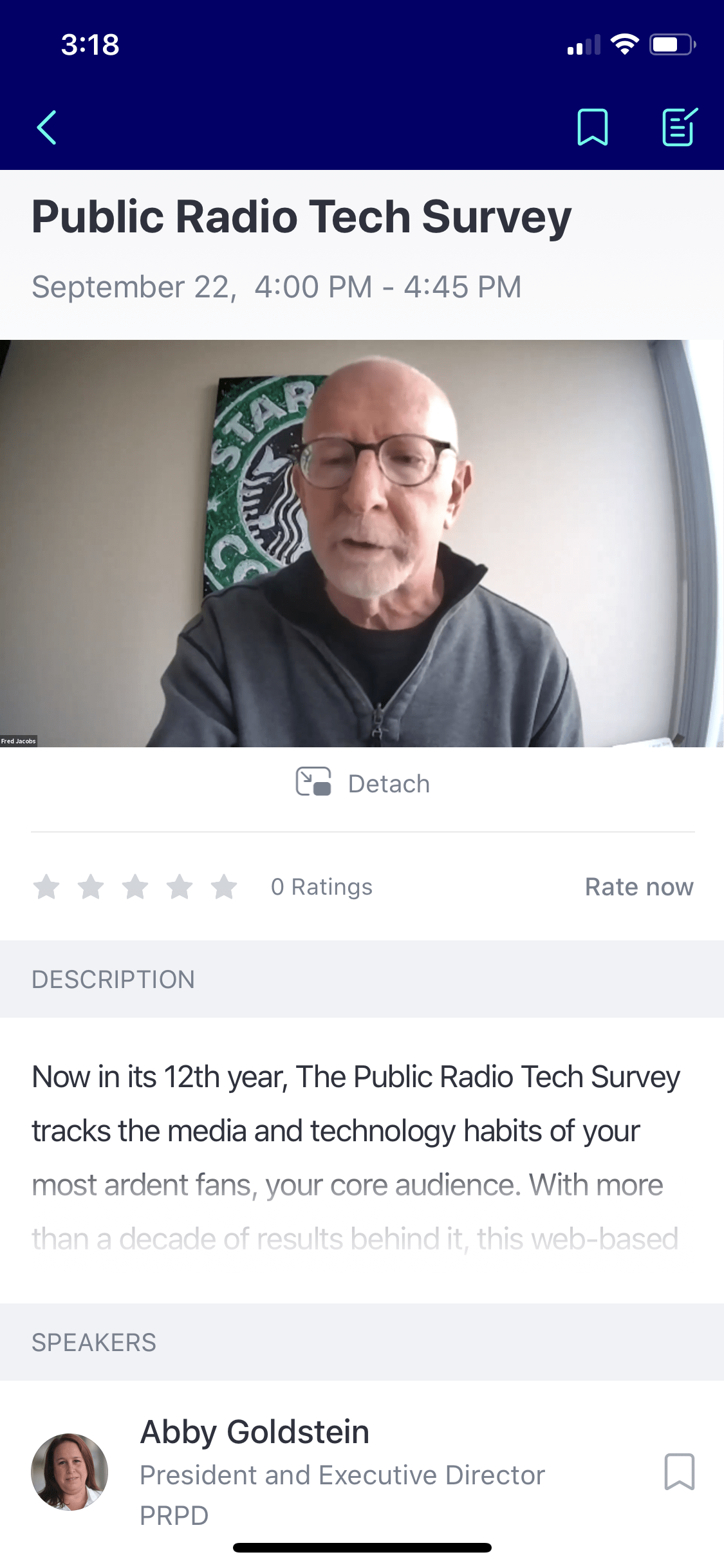 And there may have been more first-timers – Clearly, a lower price point makes these events more accessible. For an industry that needs to grow, as well as attract younger, more diverse broadcasters (and listeners), a cheaper ticket was attractive.
And there may have been more first-timers – Clearly, a lower price point makes these events more accessible. For an industry that needs to grow, as well as attract younger, more diverse broadcasters (and listeners), a cheaper ticket was attractive.
I can tell you that as a speaker/presenter – a role I’m accustomed to playing at live events – it’s great to be more available to a greater number of people thanks to virtual conferencing. I like the fact people who have not seen our research or our approach before have the chance to do so now.
Some of our executives mentioned a bigger “walk up” than usual, probably due to the fact that in order to attend these events, booking travel arrangements and making arrangements back home just isn’t necessary.
Abby noted the virtual platform offers “more access to people who would be unable to come to our annual conference. I think we had a a good contingent of people who don’t normally attend industry gatherings.”
Michelle agree, pointing out how CMB’s more focused virtual events attract “more attendees than we have when we do them in person, with tremendous engagement.”
But what about no bar? – All three executives noted that networking was a challenge, and while the virtual conference platform has great advantages, the lack of face-to-face is tough to overcome. Don reminded me that “nighttime at the hotel bar has always been treated more like the ultimate brainstorming session. It’s not uncommon to see large groups still gathered there well past midnight. I know of numerous friendships that were forged there in the past. It’s like radio’s own social media site in real life.”
And it’s difficult to replicate virtually. Looking back on it, Abby observed that she wished PRPD would have scheduled more social activities, “like happy hours or virtual concerts. We did one trivia event at the end of one day, and it was really fun, but lightly attended. I think people wanted to gather socially in the virtual space, and we just didn’t have enough of those opportunities.”
She added that for PRPD, the platform – Attendify – had some features “similar to social media, like an ‘Activity Stream’ for people to post pictures and start discussions. It also has channels where people with common interests could gather. Some of our attendees really dug into that.”
Michelle told me Momentum’s best feature was the Networking Lounge (using the Remo platform) “where everyone networked virtually and contributed during the table discussions. Artist popped in to surprise our attendees. We kept the Networking Lounge open to build community.”
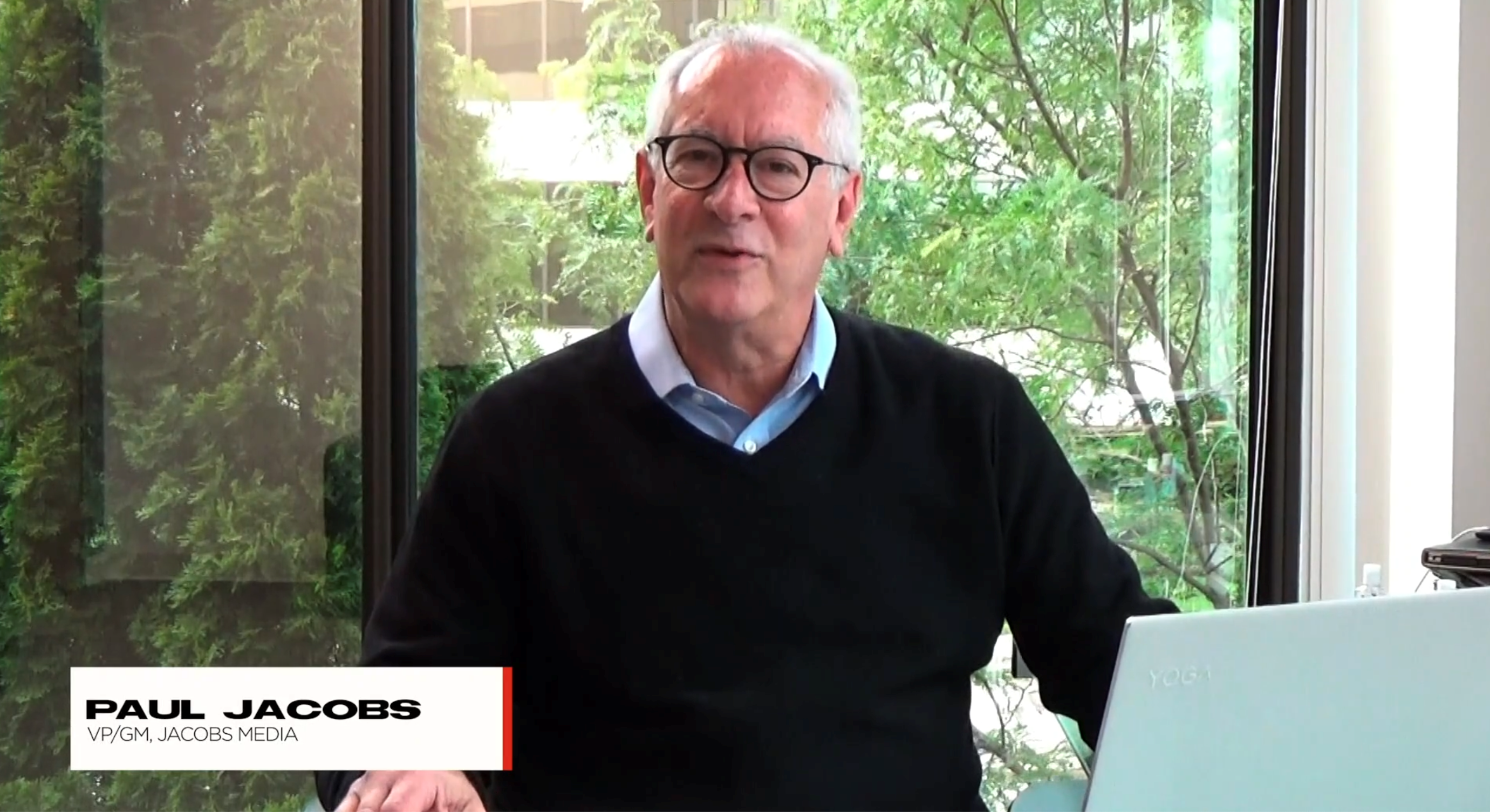
The bottom line? – All three agree their events were successful in the most challenging year ever. But Michelle lamented that attendees frequently told her that “while virtual events work for now, we cannot wait to get together in person!” And she agrees wholeheartedly. So do Don and Abby.
But there’s also no question that one way or another, virtual conventions are here to stay. Don’s conclusion: “Do I think they will ever be as good as our on-site event? Probably not. But that doesn’t mean going the virtual route can’t be effective or engaging.”
And Abby reiterated, “I can’t imagine doing a conference without some kind of virtual component from now on.”
Even with a vaccine, it is hard to imagine that industry conventions and conferences will simply snap back to the way they were before anytime soon. Aside from the health and safety concerns, it may be some time before budgets allow staffers to plan on spending three or more days away from home, given the expense of flights, hotels, and meals.
Based on our three “canaries,” these virtual events can work – for organizers, presenters, and most important, attendees.
“See you” at the next virtual conference.
- What To Do If Your Radio Station Goes Through A Midlife Crisis - April 25, 2025
- A 2020 Lesson?It Could All Be Gone In A Flash - April 24, 2025
- How AI Can Give Radio Personalities More…PERSONALITY - April 23, 2025




The virtual conference was also really interesting to produce and the entire production team learned a lot of new skills in the process. Another added benefit!
Thanks for adding that, Abby.